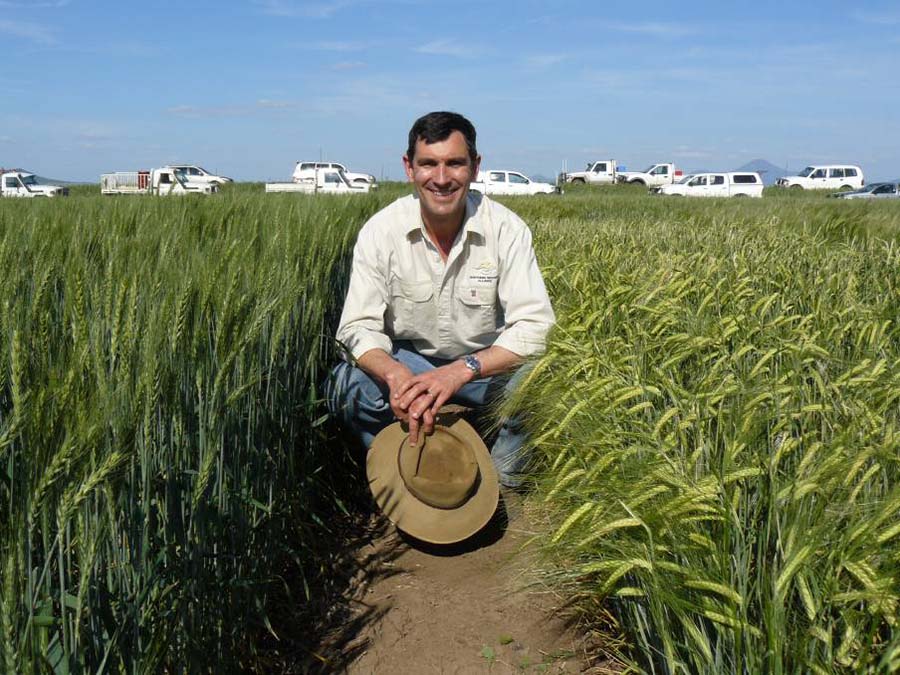Grower and adviser knowledge of soil microbiology on farms and trial sites is being steadily increased through the growing use of the DNA-based PreDicta® B soil test.
The soil testing service is helping to determine trial locations and equipping users with soil microbiology data without needing an on-site expert.
Soil-borne diseases cost Australian grain growers more than $370 million a year in lost production, but the impact of these diseases can be reduced with appropriate testing for better-informed management decisions.
Victoria's Wimmera and Mallee-based farming systems group, Birchip Cropping Group (BCG), runs about 30 crop trial sites annually and uses PreDicta® B in all of its trials.
BCG members are also shown how to use PreDicta® B in their own operations.
Yield loss potential
BCG research leader Claire Browne says growers risk yield losses if they do not know what their root disease levels are.
"However, it is a different management technique to monitoring for weeds and spraying for control," she says.
"While the cost can deter people from having soil tests performed, the risk of yield loss is potentially more expensive."
BCG commercial services manager Cameron Taylor says performing PreDicta® B testing on trial sites before planting is important to ensure accurate results.
"We always need to make sure we're not putting our trials into a disease risk area that could affect results - or there are projects with specific requirements for trials to target diseases and we may end up surveying a lot of different paddocks to gauge where would be best for our trials," Mr Taylor says.
PreDicta® B tests for most soil-borne diseases of cereals including:
- crown rot;
- Rhizoctonia root rot;
- take-all (including oat strain);
- Pratylenchus thornei;
- Pratylenchus neglectus,
- cereal cyst nematode (CCN);
- stem nematode;
- in pulses, blackspot (field peas).
The tests consider crop rotation and present levels of the diseases to provide a disease risk assessment.
Useful tool in northern region
Richard Daniel, the chief executive officer of Queensland farming systems group Northern Grower Alliance, says the group has used the PreDicta® B tool since 2006, initially for site characterisation of trials focusing on root lesion nematode (RLN) and crown rot.

The Northern Grower Alliance has extended its research into specific areas of soil-borne disease management, chief executive Richard Daniel says. Photo: GRDC
Prior to use of the test, he says, there was not a clear measure of the impact of variety selection in the event of a nematode population increase.
"There are ratings, but no one had any idea of what that meant in the paddock and whether going from moderately resistant to moderately resistant/moderately susceptible really made any difference or not," he says.
"We started using the PreDicta® B as a tool to get a better handle on the field build-up or multiplication of P. thornei under different wheat varieties, different crops and different conditions."
Studying build-ups in populations
Mr Daniel says five to six years of work looked at different varieties against population build-ups over a wide a range of soil types, environmental conditions, planting dates and other factors.
"We are consistently seeing a fourfold or fivefold difference between susceptible and resistant varieties of wheat - which is massive," he says.
"We're also collecting information to give back to breeding organisations so they can put more emphasis on resistance traits."
Mr Daniel says the group's main focus has now shifted away from RLN, with PreDicta® B being used to help investigate other issues, such as arbuscular mycorrhizal fungi (AMF) associated with long fallow disorder.
"We have been testing some of our sites, different cropping programs and a range of situations to start getting a handle on the different AMF levels and we're able to use some of those nematode sites to do this," he says.
Mr Daniel says that work began three years ago and they are already getting 10 to 15 per cent improvements on sorghum yields.
"In areas such as the Liverpool Plains near Gunnedah, New South Wales, they are able to grow canola much more consistently than further north or further west, where they've got a softer environment and more winter rainfall, but they're also summer crop growers of sorghum, cotton and mungbeans, and these are all crops which are sensitive to mycorrhizal populations," he says.
"Because of the amount of canola in their systems, they run into trouble concerning the management of rotations and they need a tool to at least understand the population dynamics after different crops or different scenarios."
Western focus on soil health
A growing focus and interest in soil health is one of the factors in the Western Australian wheatbelt-based Liebe Group's use of PreDicta® B in trials, according to the group's research agronomist and coordinator Alana Hartley.
"PreDicta® B is a good tool for understanding where our soil microbes are at, both good and bad," Ms Hartley says.
It has been particularly useful in the group's GRDC-invested legume demonstration project.
The project is assessing the effect of legume crops on the profitability and health of future cereal crops, while also investigating how to make those legume crops more profitable.
"We have been quantifying the level of disease that has been controlled by those legume crops and also assessing what they put back in the soils that can be used for future cereal rotations," Ms Hartley says.
PreDicta® B training is provided in each cropping region from late October to early December in most years. Information can be obtained from the PIRSA website.
More information: Dr Alan McKay, 08 8429 2216, alan.mckay@sa.gov.au

























































